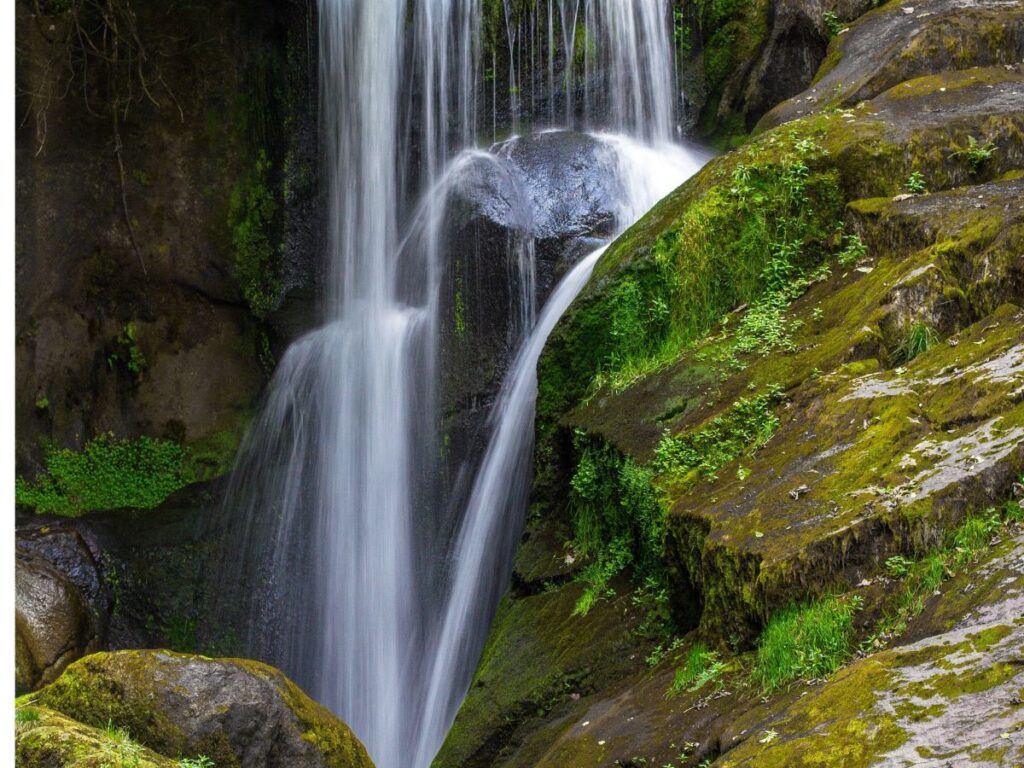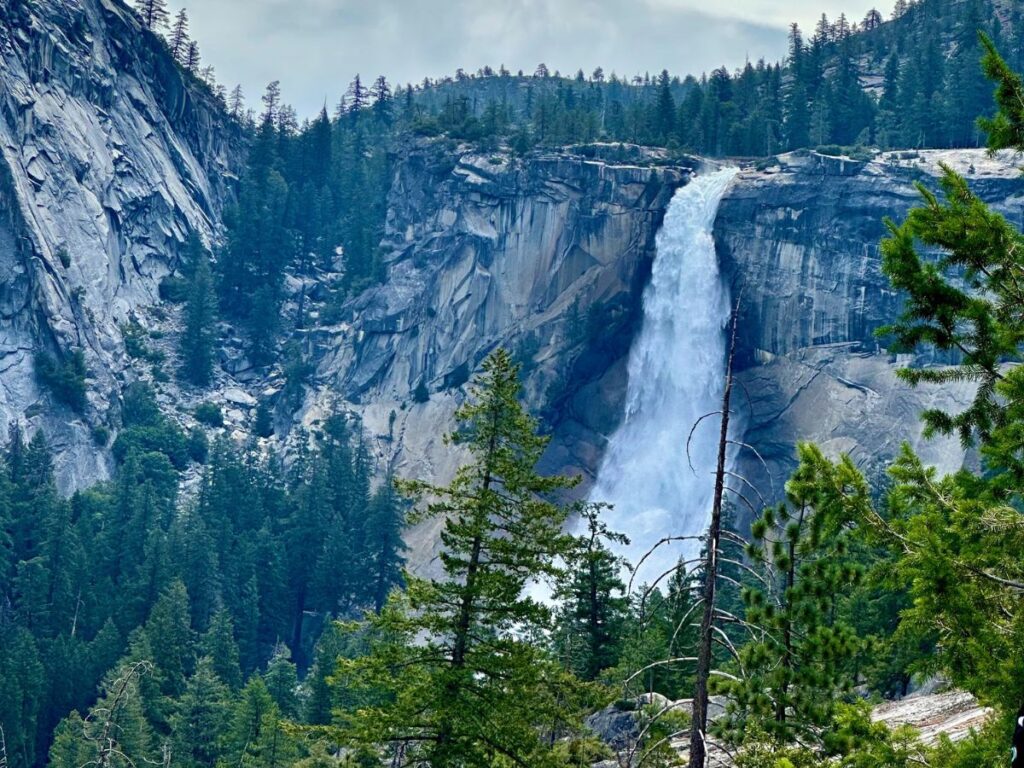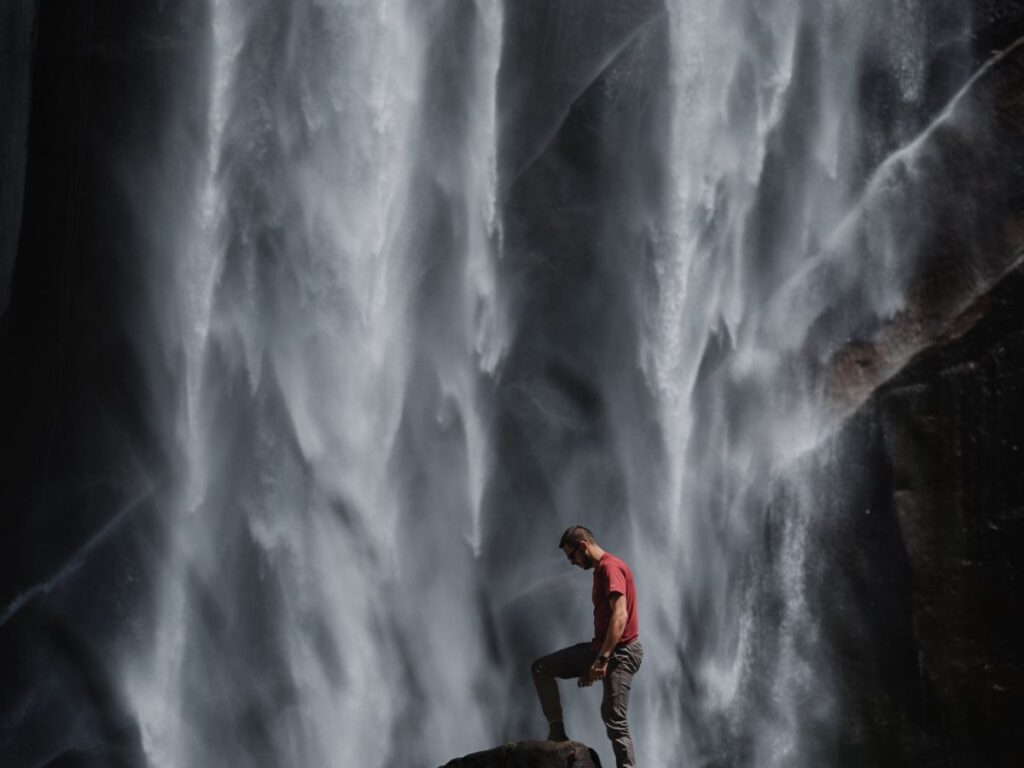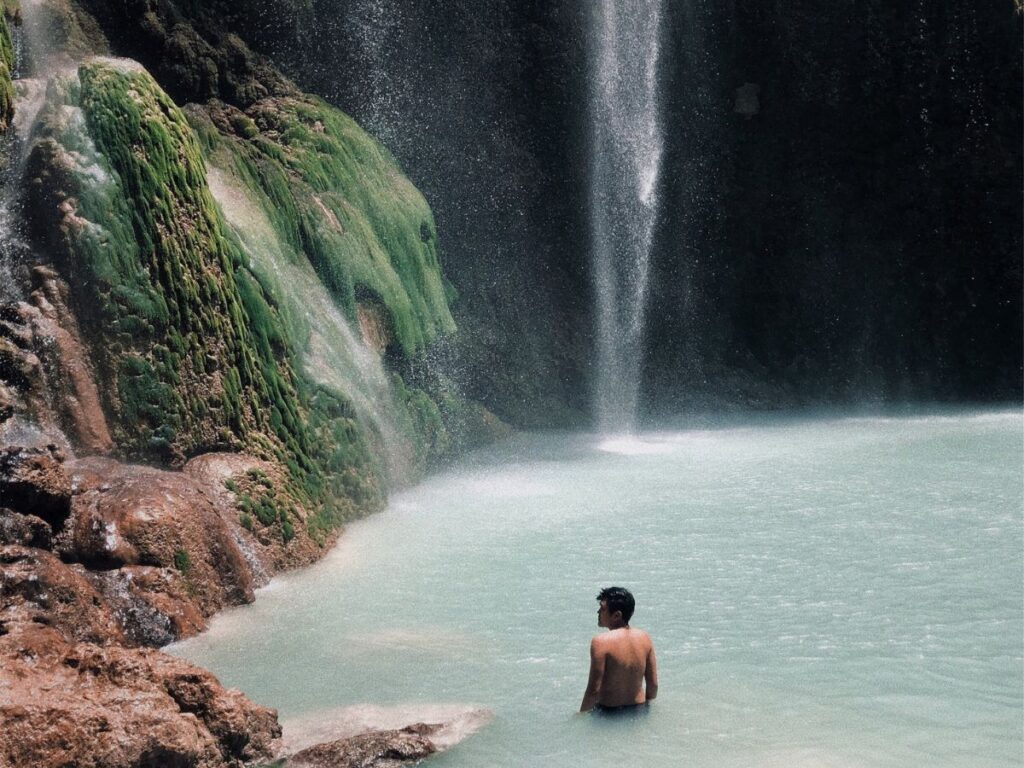Yosemite National Park, nestled in California’s Sierra Nevada mountains, is a captivating destination renowned for its breathtaking landscapes and diverse ecosystems. Within the park’s 1,169 square miles, you’ll discover a collection of remarkable waterfalls that add to its enchanting beauty. From the towering Yosemite Falls to the delicate mist of Bridalveil Fall, these cascades shape the park’s granite cliffs, nourish its flora and fauna, and inspire artists and nature enthusiasts alike
These waterfalls not only contribute to the park’s ecosystem but also serve as a source of inspiration and wonder. As you hike the trails or admire the viewpoints, you’ll witness the enduring power and splendor of nature. In this blog post, we’ll explore some of Yosemite’s most iconic waterfalls, including Yosemite Falls, Bridalveil Falls, Vernal Falls, Nevada Falls, and more. Discover the best times to visit, hiking options, viewpoints, and tips for a memorable and responsible experience in Yosemite’s captivating world of waterfalls
Yosemite National Park at a Glance
Yosemite National Park is a captivating destination known for its stunning landscapes and rich biodiversity. The park features remarkable waterfalls that contribute to its enchanting beauty.
The waterfalls in Yosemite, such as the towering Yosemite Falls and the delicate mist of Bridalveil Fall, are iconic attractions. They shape the park’s granite cliffs, create a nourishing environment for plant and animal life, and inspire artists and photographers with their awe-inspiring presence.
These cascades hold immense significance in the park’s ecosystem, contributing to its unique balance and supporting a diverse range of species. Whether you’re hiking the Mist Trail or taking in the views from a lookout point, the waterfalls in Yosemite National Park offer a glimpse into the enduring power and splendor of nature. Additionally, the waterfalls of Yosemite serve as a source of inspiration, attracting artists, photographers, and poets who seek to capture their ethereal beauty.

Yosemite Falls
Yosemite Falls is an awe-inspiring natural wonder that holds the title of North America’s tallest waterfall. It is a mesmerizing spectacle that showcases the sheer power and grandeur of nature. Standing at an impressive height of 2,425 feet, Yosemite Falls captivates visitors with its thunderous roar and majestic presence.
The falls are comprised of three distinct sections: the upper falls, the middle cascades, and the lower falls. Each section contributes to the overall beauty and magnificence of Yosemite Falls. As the water plunges from the granite cliffs, it creates a breathtaking display of cascading water and mist that can be seen and heard from miles away.
Yosemite Falls is deeply woven into the history and lore of Yosemite National Park. Native American tribes in the region considered the falls sacred, and early European explorers and settlers were captivated by its beauty. Today, it continues to inspire visitors from around the world, drawing them in with its remarkable size and natural splendor.
The falls undergo dramatic changes throughout the year, with peak flow occurring during the spring and early summer months when snowmelt from the surrounding mountains feeds the waterfall. During this time, Yosemite Falls transforms into a thundering torrent, captivating all who witness its majestic display.
How to reach Yosemite Falls?
Getting to Yosemite Falls is relatively easy. The falls are located in the heart of Yosemite Valley, accessible by car or shuttle bus. Visitors can enter the park through the main entrance and follow the signs to Yosemite Valley. Once there, signs and directions will guide you to various parking areas near the falls.
- Car: Enter the park through the main entrance and follow signs to Yosemite Valley.
- Shuttle Bus: Take advantage of the park’s convenient shuttle service, which stops near the falls.
Hiking Options to reach Yosemite Falls
Yosemite Falls Trail
- Challenging but rewarding hike to the top of the falls.
- Unparalleled views of cascades, greenery, and granite cliffs.
Lower Yosemite Fall Loop Trail
- Easy, paved trail suitable for all ages and fitness levels.
- Close-up view of the lower portion of the falls.
- Wheelchair accessible.
Best Viewpoints of Yosemite Falls
Yosemite Falls Overlook
The most popular and iconic viewpoint, offering a panoramic view of the entire waterfall and the stunning Yosemite Valley. The overlook is easily accessible from the Yosemite Village area, and parking is available nearby.
Cook’s Meadow
Located near Yosemite Valley, this meadow provides a picturesque setting with a more distant but still impressive view of the falls. It offers a peaceful atmosphere and an opportunity to appreciate the beauty of Yosemite Falls in a serene environment.
Bridalveil Falls
Bridalveil Falls is a captivating waterfall located in Yosemite National Park, renowned for its delicate mist and ethereal beauty. As you approach, the graceful cascade descends from a height of approximately 620 feet, creating a mesmerizing display of flowing water against the backdrop of towering granite cliffs. The name “Bridalveil” was inspired by the resemblance of the falling water to a bride’s veil, with its ethereal and ephemeral qualities.
Bridalveil Falls is not only visually stunning but also offers a multisensory experience. As you approach the falls, you’ll feel a gentle mist in the air, which adds to the enchantment of the surroundings. The cool spray from the waterfall creates a refreshing atmosphere, especially during warm summer months. The accessibility of Bridalveil Falls makes it a popular stop for visitors entering Yosemite Valley. Its close proximity to the main entrance makes it one of the first natural wonders that greet visitors upon arrival.
How to reach Bridalveil Falls?
Getting to Bridalveil Falls is easy. The falls are located near the entrance of Yosemite Valley, making them one of the first landmarks you’ll encounter upon entering the park. Simply follow the signs to Bridalveil Falls, and you’ll find a parking area nearby.
Hiking Options to reach Bridalveil Falls
A visit to Bridalveil Falls offers a range of hiking options to suit different preferences and fitness levels. For those seeking a short and easy stroll, a paved path leads to the base of the falls, allowing you to experience the mist up close and feel the cool spray on your skin. The round trip is approximately 0.5 miles, making it accessible for visitors of all ages and abilities.
Best Viewpoints of Bridalveil Falls
To enjoy the best viewpoints of Bridalveil Falls, head to the designated viewing area near the parking lot. From there, you’ll have a clear vantage point to admire the full height and majestic flow of the waterfall. As you approach, you’ll be greeted by the gentle mist and the mesmerizing sight of water descending from the granite cliffs. Bridalveil Falls is a true gem in Yosemite National Park, offering a serene and enchanting experience. Whether you choose to take a leisurely stroll to the base or simply admire it from the designated viewpoint, this graceful waterfall will leave you with a lasting impression of the captivating beauty found in Yosemite.

Vernal Falls
Vernal Falls is an enchanting and awe-inspiring waterfall nestled in the breathtaking landscapes of Yosemite National Park. Known for its sheer beauty and thunderous cascades, Vernal Falls captivates visitors with its raw power and serene surroundings.
As you approach Vernal Falls, the sound of rushing water grows louder, drawing you closer to its majestic presence. The falls plunge from a height of approximately 317 feet, creating a mesmerizing display of mist and spray that fills the air. The name “Vernal” aptly represents the falls’ association with spring, as the water flow reaches its peak during this season, offering an extraordinary spectacle.
How to reach Vernal Falls?
To reach Vernal Falls, head to Yosemite Valley, the heart of Yosemite National Park. The trailhead to Vernal Falls is conveniently located near the Happy Isles Nature Center. Visitors can access the park via private vehicle or utilize the park’s shuttle service, which stops at the trailhead.
Hiking Options to reach Vernal Falls
Mist Trail
- Takes you alongside the rushing waters of the Merced River.
- Features a series of well-maintained steps with stunning views of the waterfall and surrounding wilderness.
John Muir Trail
- Offers a more gradual ascent compared to the Mist Trail.
- Offers glimpses of the falls and surrounding landscapes along the way.
Best Viewpoints of Vernal Falls
Emerald Pool
- Must-visit viewpoint near the top of Vernal Falls.
- Offers a breathtaking perspective of the waterfall.
- Witness the water crashing down into the emerald-colored basin below.
Footbridge along the Mist Trail
- Noteworthy viewpoint offering a closer view of the falls.
- Allows you to feel the cool mist on your face.
Nevada Falls
Nevada Falls is a magnificent waterfall that graces the landscapes of Yosemite National Park with its breathtaking beauty and thunderous flow. Standing at approximately 594 feet in height, it captivates visitors with its grandeur and commanding presence. Named after the state of Nevada, this remarkable waterfall is a true natural wonder that leaves a lasting impression on all who witness it.
How to reach Nevada Falls?
To reach Nevada Falls, make your way to Yosemite Valley within the park. The trailhead to Nevada Falls is located near Happy Isles, accessible by car or the park’s shuttle service. Parking is available at the trailhead, but it is recommended to arrive early as spaces can fill up quickly during peak seasons.
Hiking Options to reach Nevada Falls
Mist Trail
- Most popular and thrilling route to Nevada Falls.
- Takes you alongside the roaring Merced River.
- Ascend through a series of captivating switchbacks.
John Muir Trail
- Longer and more challenging hike to Nevada Falls.
- Scenic trail with a gradual ascent.
- Provides glimpses of the falls along the way.
- Opportunity to explore the picturesque Little Yosemite Valley.
Best Viewpoints of Nevada Falls
Top of Nevada Falls
- The most rewarding viewpoint of Nevada Falls.
- Reach the crest of the falls for a breathtaking panorama.
Clark Point
- Notable viewpoint along the Mist Trail.
- Provides a vantage point to admire the waterfall from a different angle.

Illilouette Falls
Nestled in a remote and serene corner of Yosemite National Park, Illilouette Falls offers a hidden gem for nature lovers seeking a tranquil and picturesque waterfall experience. While not as widely known as some of the park’s more famous waterfalls, Illilouette Falls exudes its own unique charm and beauty. Cascading down a granite cliff, this hidden gem mesmerizes visitors with its graceful flow and secluded surroundings.
How to reach Illilouette Falls?
Reaching Illilouette Falls requires venturing off the beaten path. The falls can be accessed via the Panorama Trail, which starts near Glacier Point. To reach Glacier Point, visitors can drive or take a shuttle bus from Yosemite Valley. From Glacier Point, follow the well-marked Panorama Trail, which provides stunning vistas along the way. It’s important to note that this hike requires moderate to advanced hiking skills and is best suited for experienced hikers.
Hiking Options to reach Illilouette Falls
Panorama Trail
- Offers glimpses of breathtaking panoramas and the scenic Illilouette Creek.
- The trail continues beyond the falls, providing opportunities for further exploration.
Best Viewpoints of Illilouette Falls
- Along the Panorama Trail is the best viewpoint to admire Illilouette Falls.
- The viewpoint provides a fantastic opportunity for photography.
Horsetail Falls
Horsetail Falls is a mesmerizing waterfall nestled in the breathtaking landscapes of Yosemite National Park. Known for its unique and captivating phenomenon during the late winter months, this waterfall becomes a spectacle of nature as it transforms into a radiant “Firefall” when illuminated by the setting sun. Horsetail Falls offers a remarkable display of beauty and awe that enchants visitors from around the world.
How to reach Horsetail Falls?
To reach Horsetail Falls, make your way to Yosemite Valley within the park. The falls are easily accessible by car or shuttle bus. Follow signs to the El Capitan picnic area, where you can park your vehicle and begin your short walk to the falls. During the peak “Firefall” season, parking can be limited, so it’s advisable to arrive early or consider using alternative transportation.
Hiking Options to reach Horsetail Falls
- Short and relatively easy hike from the El Capitan picnic area.
- Trail meanders through the beautiful Yosemite landscape.
Best Viewpoints of Horsetail Falls
- Most popular viewpoint is from the El Capitan picnic area.
- Sunsets during late winter months create a beautiful backlighting effect.
- Waterfall appears like flowing lava or fire cascading down the cliffs.
Southside Drive Turnout
- Another vantage point to admire Horsetail Falls.
- Located near the El Capitan crossover on Southside Drive.
- Set against the backdrop of the surrounding Yosemite landscape.
Sentinel Falls
Sentinel Falls is a breathtaking waterfall located in Yosemite National Park, known for its sheer beauty and dramatic descent. With a height of approximately 2,000 feet, it stands as one of the tallest waterfalls in the park. The cascading waters of Sentinel Falls captivate visitors with their raw power and create a spectacle that showcases the grandeur of nature.
How to reach Sentinel Falls?
To reach Sentinel Falls, head to Yosemite Valley within the park. The waterfall is visible from various viewpoints along the Southside Drive, including the Swinging Bridge picnic area. Access to Yosemite Valley can be achieved by private vehicle or park shuttle. As you drive along Southside Drive, keep an eye out for signs or pullouts indicating viewpoints of Sentinel Falls.
Hiking Options to reach Sentinel Falls
There is no specific hiking trail to reach the base of Sentinel Falls. However, adventurous hikers can embark on off-trail explorations, carefully navigating the terrain to get closer to the waterfall. It is important to note that off-trail hiking in Yosemite requires advanced navigation skills and a thorough understanding of the surrounding environment. Always prioritize safety and respect park regulations.
Best Viewpoints of Sentinel Falls
The most popular and easily accessible viewpoints of Sentinel Falls are from the various pullouts along Southside Drive. These viewpoints offer panoramic vistas of the waterfall and its magnificent descent. The Swinging Bridge picnic area provides a particularly picturesque viewpoint, allowing visitors to admire the majestic flow of Sentinel Falls against the backdrop of the surrounding natural beauty.
Glacier Point
- Accessed via the Glacier Point Trail, which provides a moderate hike.
- From Glacier Point, witness the grandeur of Sentinel Falls from a higher elevation, offering a unique perspective of this majestic waterfall.

The Lesser-known Waterfalls of Yosemite
In addition to Sentinel Fall, there are a few other waterfalls in Yosemite National Park that are considered hidden gems or lesser known:
Ribbon Fall: One of the longest single-drop waterfalls in North America, best seen in the spring or early summer.
Wapama Fall: Located in the Hetch Hetchy area of the park, Wapama Fall is a picturesque waterfall that cascades down a granite cliff. It can be accessed via the Wapama Falls Trail and offers a less crowded alternative to the more popular waterfalls in Yosemite.
Chilnualna Falls: Situated in the southern part of the park near Wawona, Chilnualna Falls is a series of cascades that offer a beautiful and secluded hiking experience. The trail to the falls provides stunning views of the surrounding wilderness and is a hidden gem for those seeking solitude.
Rancheria Falls: Found in the lesser-visited Hetch Hetchy region, Rancheria Falls is a rewarding waterfall accessed via the Rancheria Falls Trail. This lesser-known waterfall offers a peaceful ambiance and a chance to enjoy the natural beauty of Yosemite in a more serene setting.
Planning Your Visit
The best time to witness the waterfalls in Yosemite National Park is during the spring months, typically from April to June. This period is ideal as it offers optimal water flow due to snowmelt, resulting in more impressive and powerful cascades.
Lodging: Yosemite National Park provides a range of accommodation options, including hotels, lodges, and cabins. Choose from a variety of hotels, lodges, and cabins for a comfortable stay.
Camping: Yosemite also offers various campgrounds for visitors who prefer a more immersive outdoor experience. Campgrounds are available both within the valley and in other areas of the park. It’s essential to make reservations well in advance, as they tend to fill up quickly, especially during the peak season.
Permits & Entry Fees
Park Entry Fee: Yosemite National Park charges an entrance fee per vehicle or per person for those entering the park. The entrance fee is $35 per vehicle for adults and $15 per vehicle for children under 12 years old.
Wilderness Permits: If you plan to embark on overnight backpacking trips or hike to remote areas, you may need a wilderness permit. For overnight backpacking trips or remote hikes, obtain a wilderness permit for $10 per person.
Necessary Gear for Waterfall Hikes
- Sturdy Footwear
- Water and Snacks
- Sun Protection
- Camera or Smartphone
- Powerbank & Chargers
Safety Tips for Hiking and Viewing Waterfalls
- Stick to established trails and paths to minimize the impact on the environment and ensure your safety.
- Familiarize yourself with park rules and regulations and adhere to them for your safety and the preservation of the park.
- Waterfall areas can be slippery, so exercise caution and avoid climbing on wet rocks or entering restricted areas.
- Carry an adequate water supply and drink regularly to stay hydrated, especially during strenuous hikes.
- Keep an eye on weather forecasts and be prepared for changes in conditions. Thunderstorms can lead to increased water flow and hazardous conditions near waterfalls.
Preserving Yosemite’s Waterfalls: How Visitors Can Help
Visitors should recognize the significance of preserving the natural beauty of Yosemite’s waterfalls for future generations. Respecting park rules, staying on designated trails, and avoiding disturbance to wildlife and vegetation are essential. To minimize environmental impact, visitors should pack out all trash, keep noise levels low, avoid altering the landscape, and use designated restroom facilities or portable toilets. Supporting conservation efforts through donations, participating in volunteer programs or clean-up events, and promoting responsible practices among fellow visitors can make a positive impact. By understanding the significance of conservation, practicing Leave No Trace principles, and actively engaging in preservation efforts, visitors can play a vital role in protecting and preserving the awe-inspiring waterfalls of Yosemite National Park for generations to come.

Conclusion
A visit to Yosemite National Park is incomplete without experiencing the majesty of its waterfalls. From the thunderous cascade of Yosemite Falls to the delicate mist of Bridalveil Falls, these natural wonders leave an indelible mark on all who witness them. As you explore the park’s hiking trails, admire the viewpoints, and immerse yourself in the surrounding beauty, you’ll gain a deeper appreciation for the power and grace of nature. Remember to plan your visit during the optimal season, respect the environment, and prioritize safety during your waterfall adventures. By embracing these principles and cherishing these treasures, you’ll create memories that will last a lifetime in the heart of Yosemite’s enchanting world of waterfalls.
FAQs
1. How many waterfalls are there in Yosemite National Park?
Yosemite National Park is home to numerous waterfalls, with the most famous being Yosemite Falls, Bridalveil Falls, and Vernal Falls, among others.
2. What is the best time of year to visit Yosemite’s waterfalls?
The best time to visit Yosemite’s waterfalls is during spring, from April to June, when the snowmelt results in higher water flow and more impressive cascades.
3. Are there any guided tours or hikes available to the waterfalls?
Yes, there are guided tours and hikes available to the waterfalls in Yosemite National Park, providing informative experiences and expert insights.
4. What is the tallest waterfall in Yosemite National Park?
The tallest waterfall in Yosemite National Park is Yosemite Falls, which stands at a height of approximately 2,425 feet (739 meters).
5. Are pets allowed near the waterfalls?
Pets are generally not allowed on trails or near the waterfalls in Yosemite National Park to protect the park’s wildlife and preserve its natural environment.
6. Do I need a permit to hike to the waterfalls?
Permits are required for some hikes, such as overnight backpacking trips or hiking in certain restricted areas. Check with the park authorities for specific permit requirements.
7. Are there any safety precautions to keep in mind when visiting the waterfalls?
When visiting the waterfalls, it is important to stay on designated trails, be cautious of slippery surfaces, respect safety barriers, and follow all park guidelines and warnings.
Extra Scoop For You!
- Official Website of Yosemite National Park: https://yosemite.org/
- Contact Details
- Phone: 209/372-0200
For those of you who are intrigued about waterfalls, we have some extra reading material recommendations for you. Discover the enchanting world of waterfalls with these popular books:
- ‘Waterfalls of the Pacific Northwest’ by David L. Anderson
- ‘Waterfalls of the Great Smoky Mountains’ by Gregory Plumb
- ‘Waterfalls of the Blue Ridge’ by Nicole Blouin and Steve Yocom.
